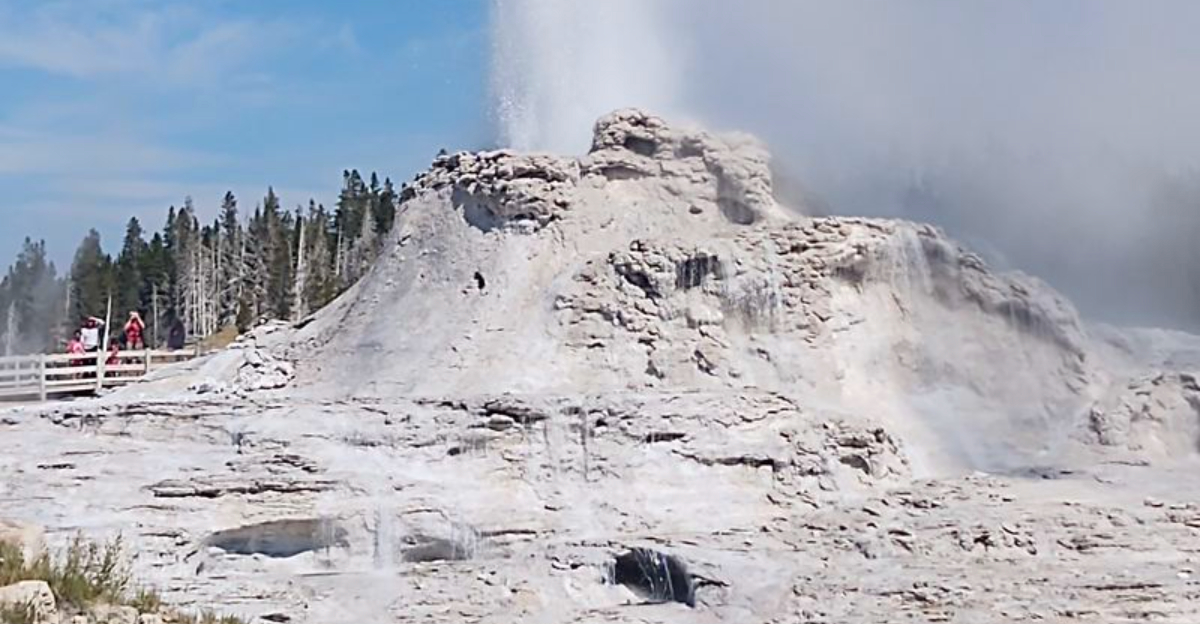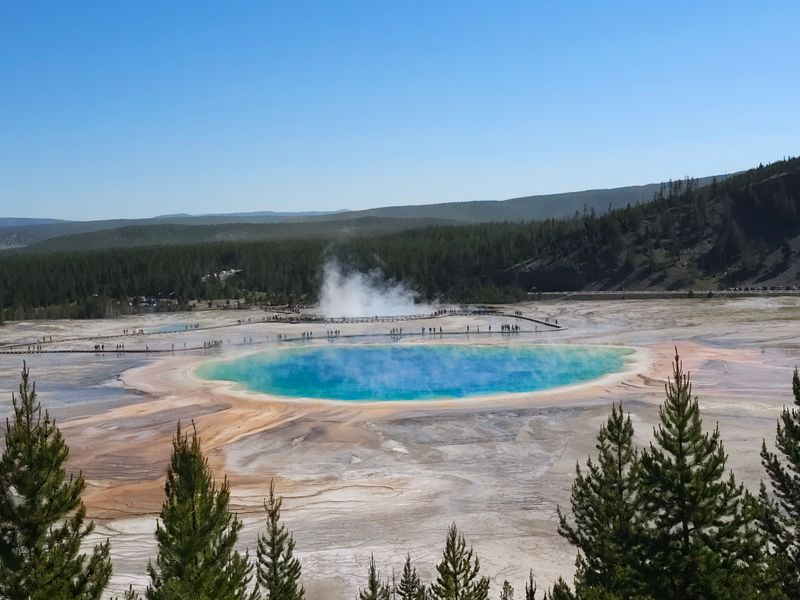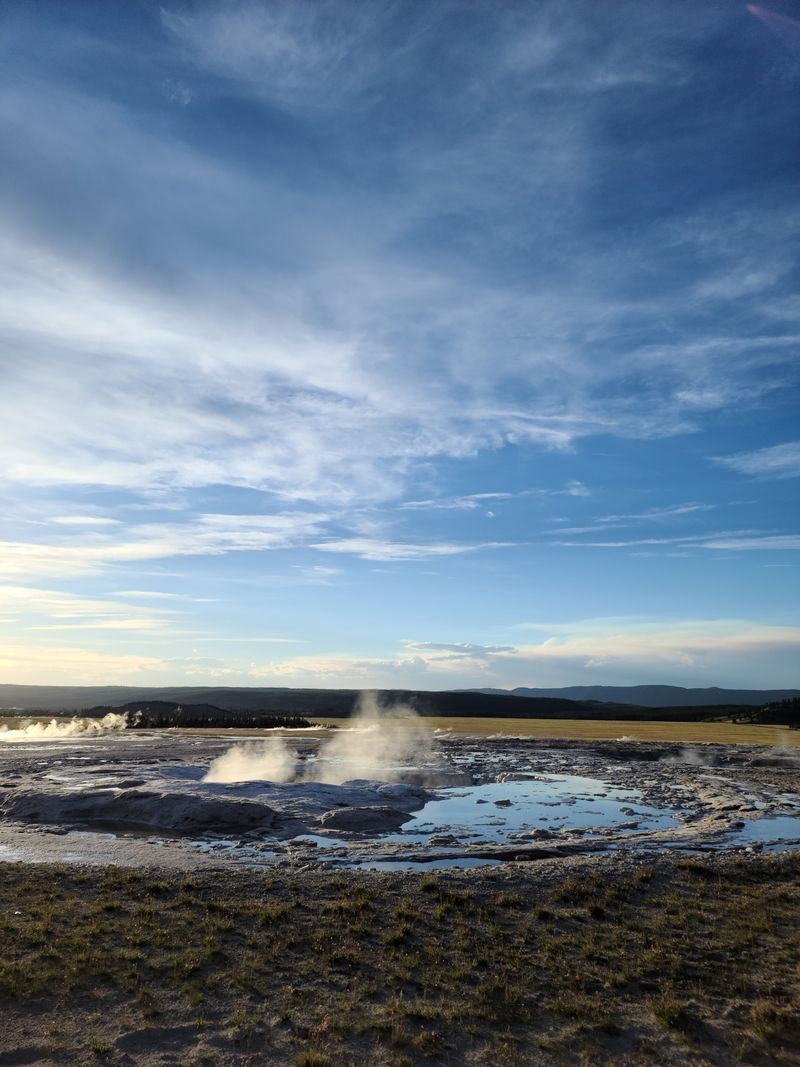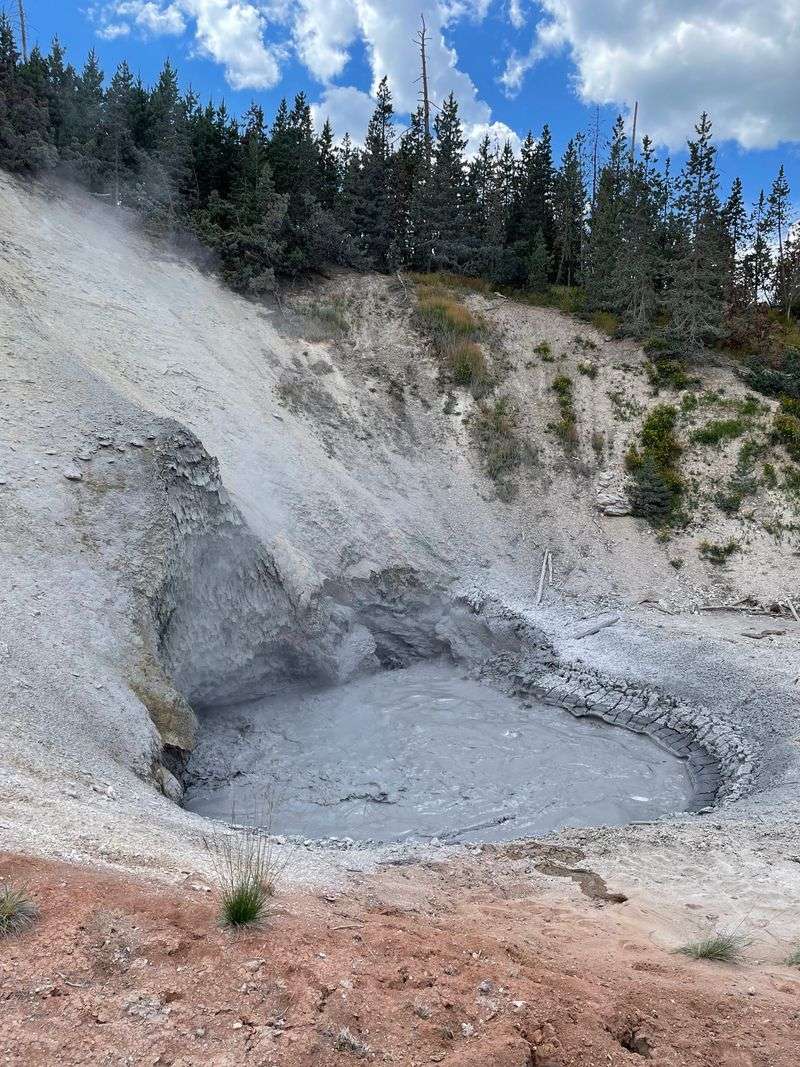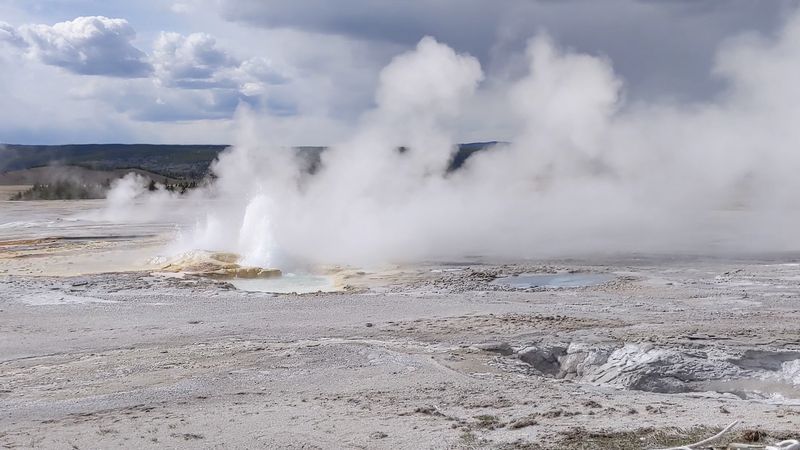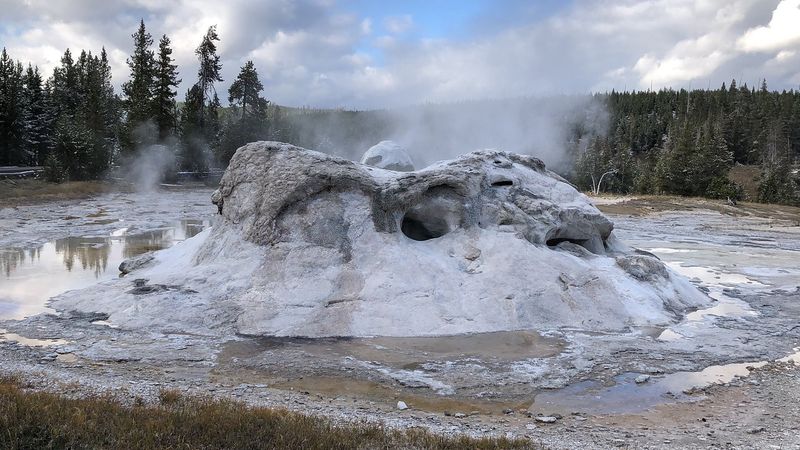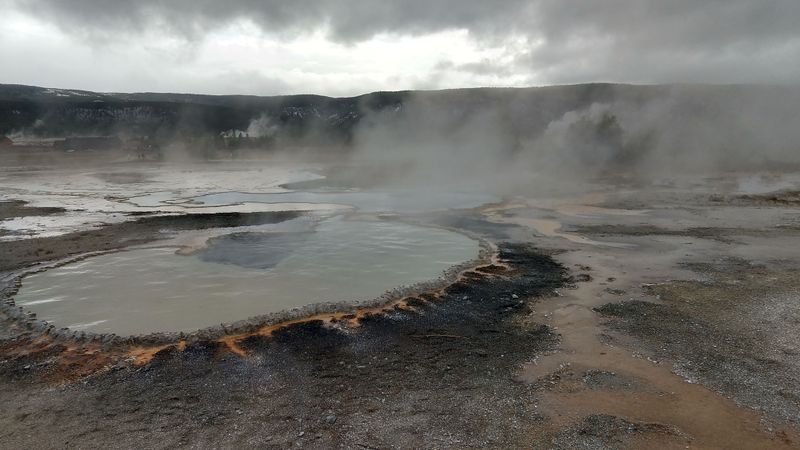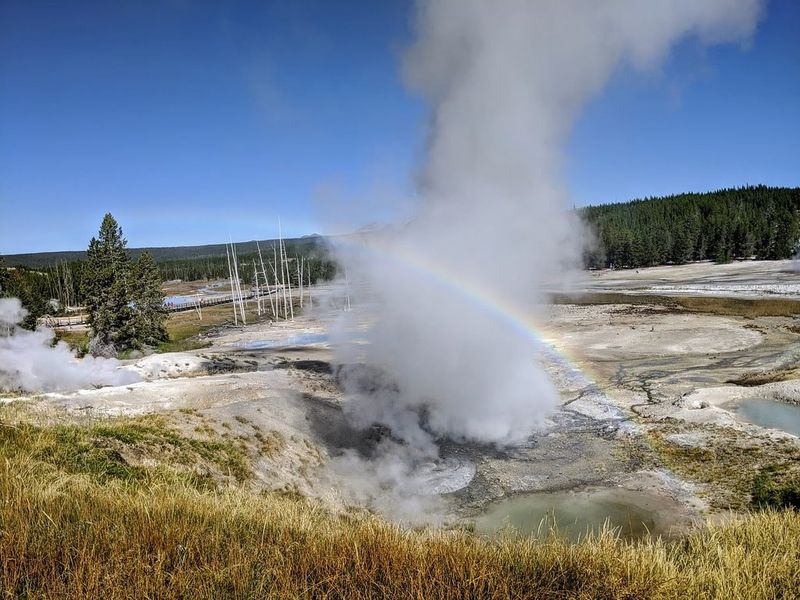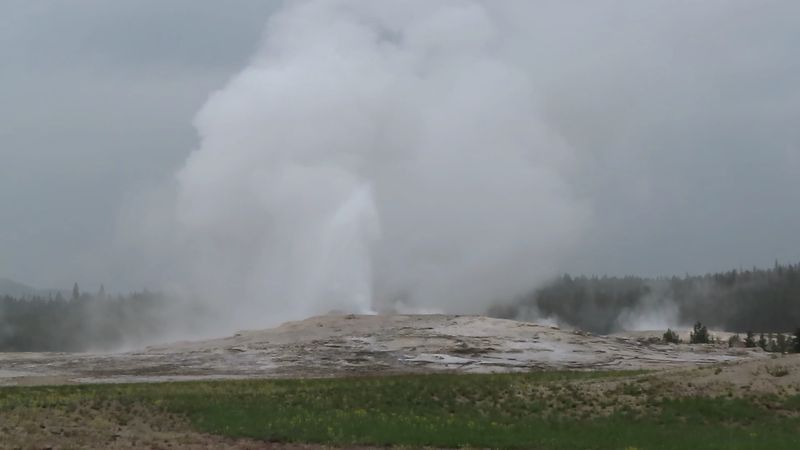Yellowstone stirs imaginations because it feels both majestic and mysterious. You hear about swarms of quakes and rising ground and wonder if the supervolcano is whispering a warning. Here is what scientists really know right now, pulled from the most trusted sources that track every twitch and burp. Read on to separate cinematic fear from evidence you can trust.
1. Yellowstone Is Actively Monitored
You are not left guessing with Yellowstone because the Yellowstone Volcano Observatory watches it around the clock. A partnership of USGS, the National Park Service, and the University of Utah tracks quakes, ground motion, and gas. If the system shifts, the instruments notice fast.
This high level of monitoring acts like a health check for the volcano. Seismometers, GPS, tiltmeters, and gas sniffers feed continuous streams of data. With so many eyes on the system, meaningful unrest would likely be flagged well in advance.
2. Annual Chance of a Catastrophic Eruption Is Extremely Low
The odds of a caldera scale event in any given year are about 1 in 730,000. That is roughly 0.00014 percent, which is vanishingly small in everyday terms. It places Yellowstone risk in the realm of rare, not routine.
For perspective, scientists often compare that probability to the chance of a large asteroid strike. You are not ignoring danger by acknowledging this number. You are simply aligning your expectations with the best evidence available.
3. Past Eruptions Were Massive but Rare
Geology records three super-eruptions over about 2.1 million years. They were spaced roughly every 600,000 to 800,000 years. The most recent happened around 640,000 years ago.
Those events reshaped landscapes across the West. Still, the spacing shows how infrequently such extremes occur. You can respect the power without assuming it is overdue.
4. Smaller Eruptions Are More Likely than a Super-eruption
If Yellowstone erupts again, scientists consider modest lava flows or hydrothermal explosions more probable than a continent scale blast. The geologic record backs that up. The most recent activity was a lava flow, not a massive explosion.
That matters for risk planning. Local hazards are still serious, but they do not match apocalyptic scenarios. You get a clearer sense of what to prioritize.
5. Ground Deformation Is Real but Not Unusual
Parts of the caldera sometimes rise by a few inches per year. At other times they sink back down. This breathing is normal for a living hydrothermal and magmatic system.
Decades of measurements show inflation and deflation cycles. You might see headlines, but the context is long term. Uplift alone is not a red alert without other strong signals.
6. A Breathing Magma Cap Has Been Discovered
Researchers reported a volatile rich cap of melt plus gas bubbles roughly 3.8 kilometers beneath the surface. It appears to vent gas slowly in a steady pattern. Think of it as a pressure regulator, not a sealed lid.
This kind of cap can explain persistent gas emissions at the surface. It also clarifies how the system relieves pressure over time. You get a more nuanced picture than simple full or empty magma myths.
7. Scientists Used Tiny Earthquakes to Map the Magma Chamber
To see underground clearly, researchers used a 53,000 pound vibroseis truck to shake the ground in a controlled way. Those custom earthquakes let waves bounce through the crust. More than 600 seismometers listened for echoes.
The setup is common in energy exploration but powerful for volcano imaging. You benefit from sharper pictures of the reservoir. Better images mean better forecasts.
8. The Magma Reservoir’s Top Is Sharply Defined
Seismic results show a sharp boundary near 3.8 kilometers depth. It is not a fuzzy transition. That crisp edge helps scientists constrain the shape and properties of the reservoir.
Sharper geometry makes models more reliable. You can interpret deformation and gas data with tighter limits. Uncertainty shrinks when the edges are clear.
9. Gas Content Is Moderate, Not Critically High
Models point to a mix of melt and gas, including supercritical water, in that shallow cap. Levels appear moderate, not extreme. Nothing suggests runaway pressure right now.
Gas seems to move through cracks and pores instead of building in a sealed chamber. That slow percolation aligns with the steady breathing idea. It matches the lack of strong unrest signals.
10. Hydrothermal Features Help Vent Pressure
Geysers, mud pots, hot springs, and fumaroles are not sideshows. They are release valves for heat and gas. When you watch steam drift skyward, you are seeing the system exhale.
This venting helps bleed pressure from depth. It lowers the odds of sudden, sealed chamber failures. The surface spectacle doubles as a safety feature.
11. Super-eruption Doesn’t Seem Imminent
Right now, the data do not show signs of a looming major eruption. USGS scientists say they would expect loud precursors before anything big. Think large sustained earthquake swarms and rapid uplift.
Those patterns are not present. You can enjoy the park while staying informed. Curiosity is wise, panic is not.
12. Catastrophic Risk Is Rarely the Biggest Hazard
According to USGS, a caldera forming burst sits at the bottom of the likelihood list. More common hazards include steam driven explosions and strong earthquakes. Those are the risks that planners watch most closely.
Preparing for realistic scenarios pays off. You can focus on local safety rather than cinematic disaster. Evidence keeps the conversation grounded.
